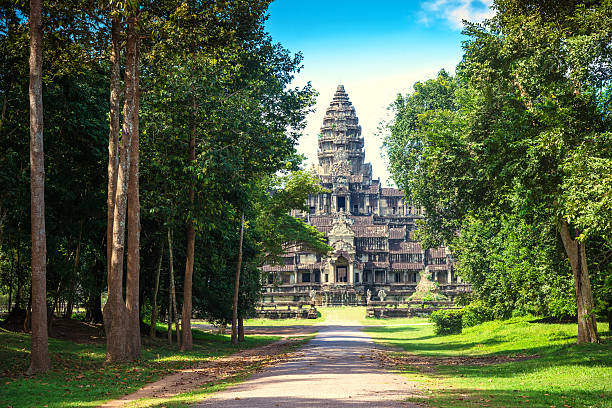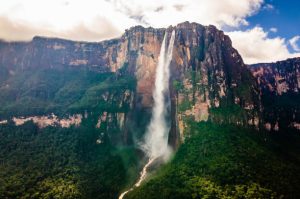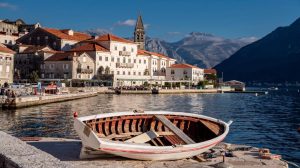The Rich History of Cambodia: From Khmer Empire to Modern Day

Cambodia and its History is a country of survival, magnificence, and cultural development thus becoming one of the most captivating countries to visit in Southeast Asia. Since the golden age of Khmer Empire that created the marvelous Angkor Wat in the world, the colonialism and the colonial rule under French rule, and the ultimate era of rebuilding and recognition and acceptance to the rest of the world, the history of Cambodia is the history of spirit of survival and transformation. All strata of its history provide the tourists with not only the understanding of the events that took place in the past but also the opportunity to see the living traditions that are still alive.
To the travelers intending to visit this beautiful country, the History of Cambodia can help them develop the experience on a deeper level. You walk the streets of Phnom Penh, exploring its architectural marvels in Siem Reap, or when you explore unexplored rural provinces, you will inevitably be transported back in time, several centuries, and associated with centuries of history. But before you start your escapades, you should want to get your Cambodia visa or Cambodia travel visa so that you can have a hassle free trip. It can be made easier with the help of trusted travel partners such as Go Kite Oman so that you are not distracted, but rather concentrate on the cultural discoveries that are awaiting you. This guide discusses the history of Cambodia, the revival of this historical nation, since ancient times to the present day.
The beginning of the Cambodian Civilization.
The history of Cambodia starts with the settlements along the Mekong River basin. Archaeological evidence also indicates that people were living in the region over 4000 years ago, and that rice was grown in the area, and bronze metallurgy existed. These primeval societies were the basis of complex kingdoms that would later take over the region.
The first century AD saw the rise of Funan Kingdom which was a successful trading state. The Cambodia became a center of cultural exchange when Funan linked India to China. Hinduism and Buddhism were brought by traditional Indian merchants and formed the beliefs and practices that are still evident in Cambodian temples and practices.
The Rise of the Khmer Empire
The Khmer Empire (9th15 th century) is by far the most important period in the History of Cambodia. This empire was founded in 802 AD by King Jayavarman II and was one of the greatest empires in Southeast Asia. Angkor is the capital that accommodated over a million inhabitants at its highest point and it was one of the largest pre-industrial cities in the world.
Angkor Wat, the jewel of Khmer architecture is the largest religious monument ever constructed. Continued to be a Hindu temple of Vishnu, it was later transformed into a Buddhist one, which was a symbol of the changing spiritual character of the kingdom. The empire spread all through modern-day Thailand, Laos, and Vietnam, and the art, culture, and architecture have remained as a source of amazement to date.
Cultural and Religious Transformation.
The religious development of Cambodia is one of the most outstanding ones in the history of the country. The Khmer Empire was initially inhabited by Hindu traditions, and subsequently adopted Mahayana and Theravada Buddhism. Theravada Buddhism became the national religion by the 14 th century, which remains an aspect of the Cambodian identity.
The architecture and art of Cambodia was also affected by such amalgamation of religions. Buddhist compassion is reflected in such temples as Bayon with its famous stone faces, and the Hindu carvings in Angkor show the epic tales such as the Ramayana. These art masterpieces render Cambodia an indispensable sightseeing place among all those who love history and culture.
The Khmer Empire on the Downward Slope.
At the end of 15 th century, the Khmer Empire started to lose its strength. The empire was weakened by constant wars with their neighbors like the Ayutthaya kingdom (Thailand) and internal instability. The golden age of Cambodia came to an end with Ayutthaya army plundering Angkor in 1431.
The capital had transferred to Phnom Penh and Cambodia became vulnerable. The former mighty empire got entangled between the sphere of influence of Siamese and Vietnam and lost the lands and the power during the centuries. This notwithstanding, the Cambodian culture and Buddhist religion were maintained through its strength.
French Rule Colonial Era.
During the 19 th century, when European colonial powers began spreading in Asia, Cambodia was declared a French protectorate in 1863. Although the French rule led to the improvement of the infrastructure such as roads, railways, and schools, it constrained the sovereignty of Cambodia.
It was the French who played a crucial role in rediscovering Angkor Wat, restoring it and marketing it as a global heritage site. It was also the time when Western education and administration were introduced. Nonetheless, Cambodians viewed the colonial rule to be oppressive and this resulted in increased nationalism movements in the early 20th century.
Freedom and Political Warfare.
In 1953, Cambodia was finally able to obtain independence form France under the leadership of King Norodom Sihanouk. The decades that followed were also challenging and were characterized by political instability and the effects of the Vietnam War on the region.
The Khmer Rouge regime during Pol Pot was among the darkest moments experienced in Cambodia in the 1970s. In 1975-1979, the number of people executed, sent to forced labor, and starving amount to close to two million. The tragedy wiped out the Cambodian people and culture.
In 1979, Vietnam came in to overthrow the Khmer Rouge yet, the country persisted in battling political fragmentation and global seclusion in the 1980s.
Cambodia’s Path to Recovery
The year 1990s witnessed a turning point in the History of Cambodia. In 1993, a peace process sponsored by UN aided in restoring peace and democratic elections were organized. The country was gradually regaining its economy, tourism and cultural pride.
Cambodia today can be regarded as having a vibrant tourism business that attracts millions of tourists every year to the Angkor Wat and other historical sites. Poverty and development requirements remain to be the challenges in the country, but the nation has cultural strength and the growing economy as the symbols of hopefulness.
Cambodia in the Modern Day
The contemporary Cambodia is a mixture of the ancient traditions and the international influences. Phnom Penh is a dynamic capital city having skyscrapers, shopping malls, international companies but still it maintains historicity sites such as Royal Palace and National Museum.
Siem Reap continues to be the core of the tourism to provide tourists with a chance not only to visit temples but also cultural shows, food, and eco-adventures. In the meantime, the southern coast of Cambodia with its clean beaches is emerging as an attraction to foreigners.
To the international tourists, it is easy to acquire a Cambodian travel visa. The process can be simplified through agencies such as Go Kite Oman since you will not have to spend time on paperwork, but to explore new places in Cambodia. Cambodia is a great and enriching experience whether one is interested in cultural history, nature, or modern attractions.
Conclusion
History of Cambodia is a path of glory to struggle and rebirth back to strength. Cambodia has survived and prospered since the splendor of the Khmer Empire to the destruction of the Khmer Rouge, colonial influences all the way to the present-day independence. All the temples, monuments, and cultural practices narrate the history of a people who considered their own identity to be significant regardless of the challenges that have occurred throughout hundreds of years.
To a contemporary tourist, Cambodia is not only the destination point but a book of history. The first step to being part of this incredible story is to get your Cambodia visa or Cambodia travel visa. When you have the stable hands of Go Kite Oman, then you will have a smooth sail to explore the past and present of Cambodia. Exploring its ancient ruins, knowing its plight, and seeing its current renewal, you identify with one of the most captivating narratives in Asia the lasting and powerful History of Cambodia.




